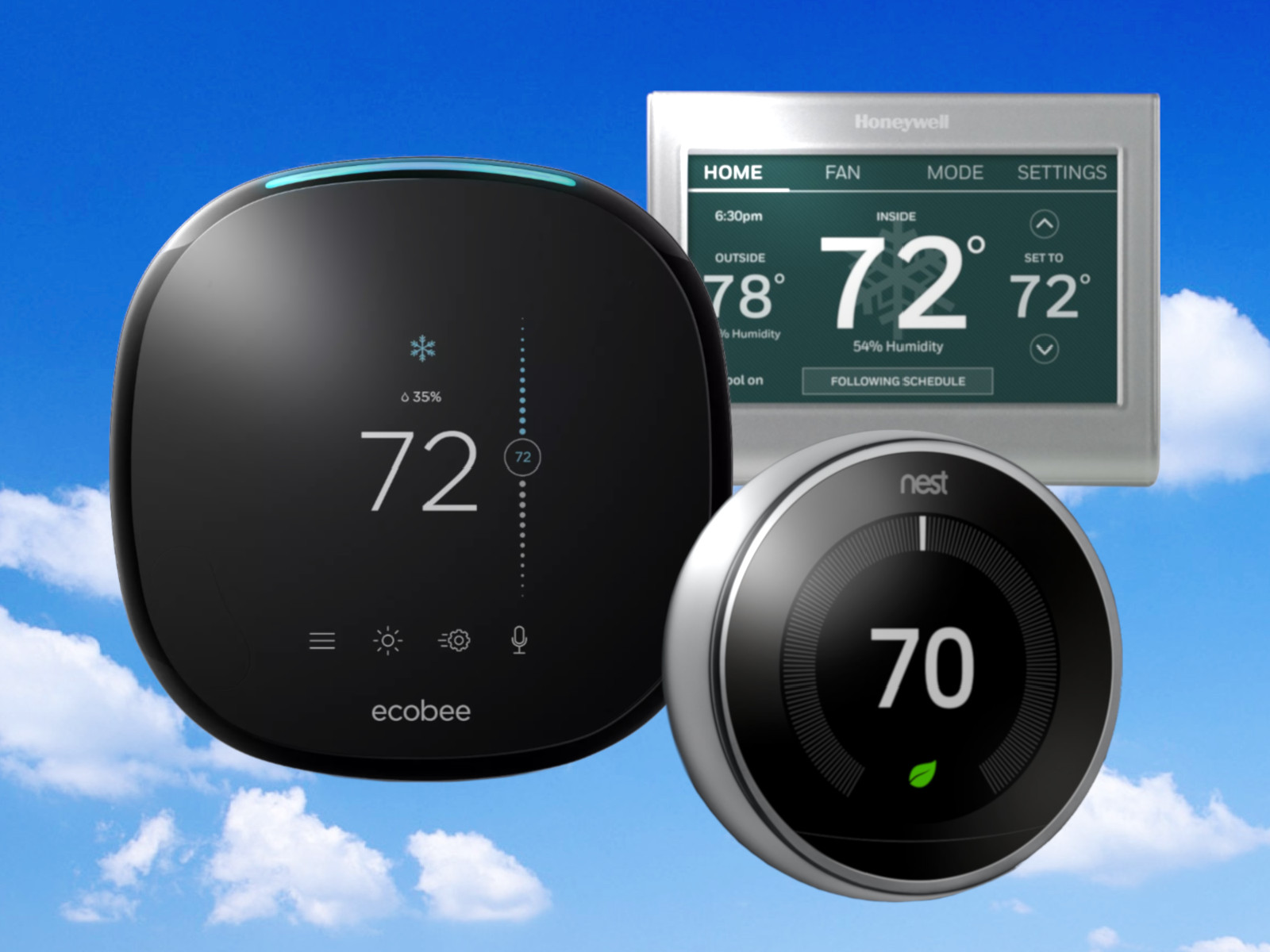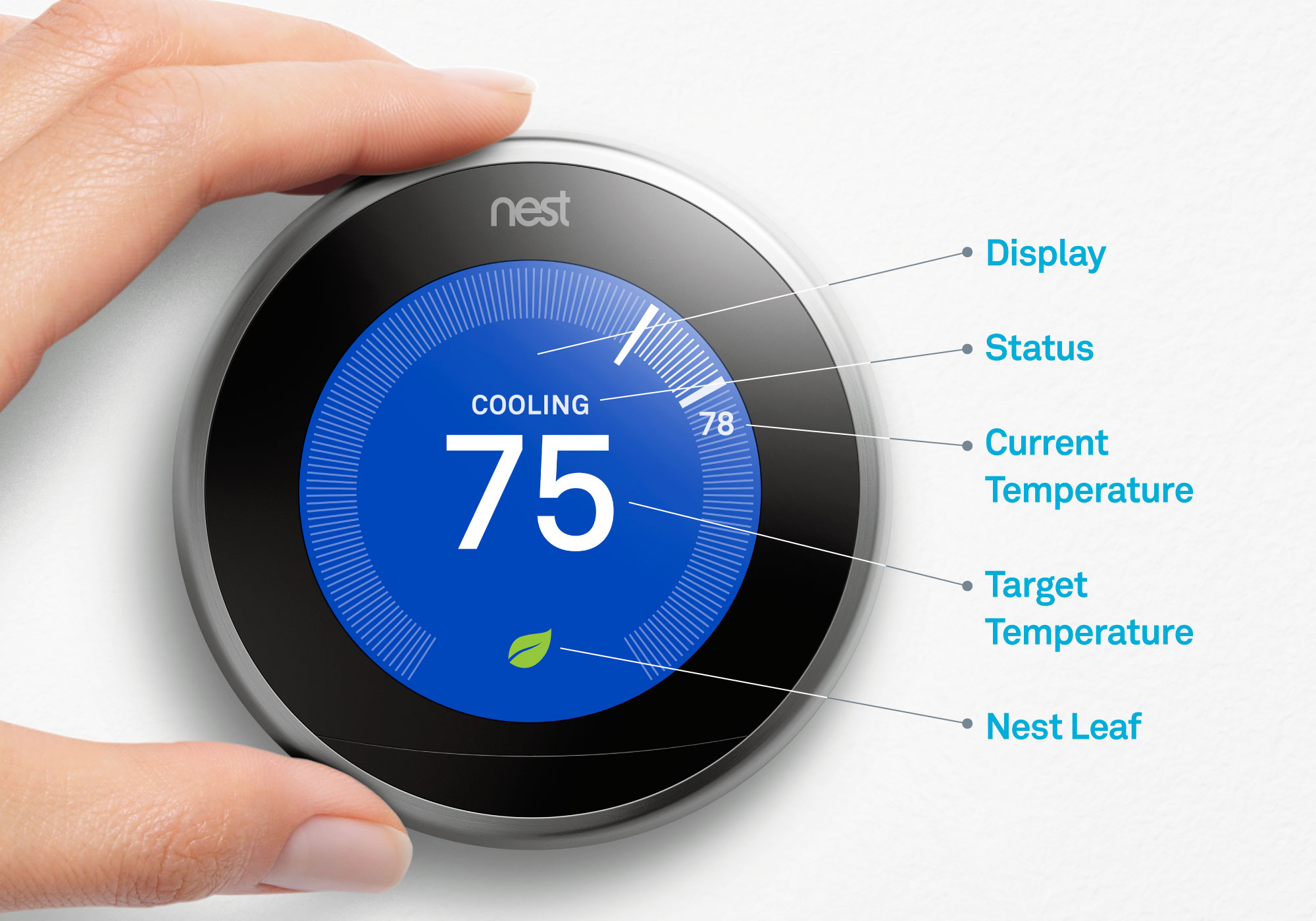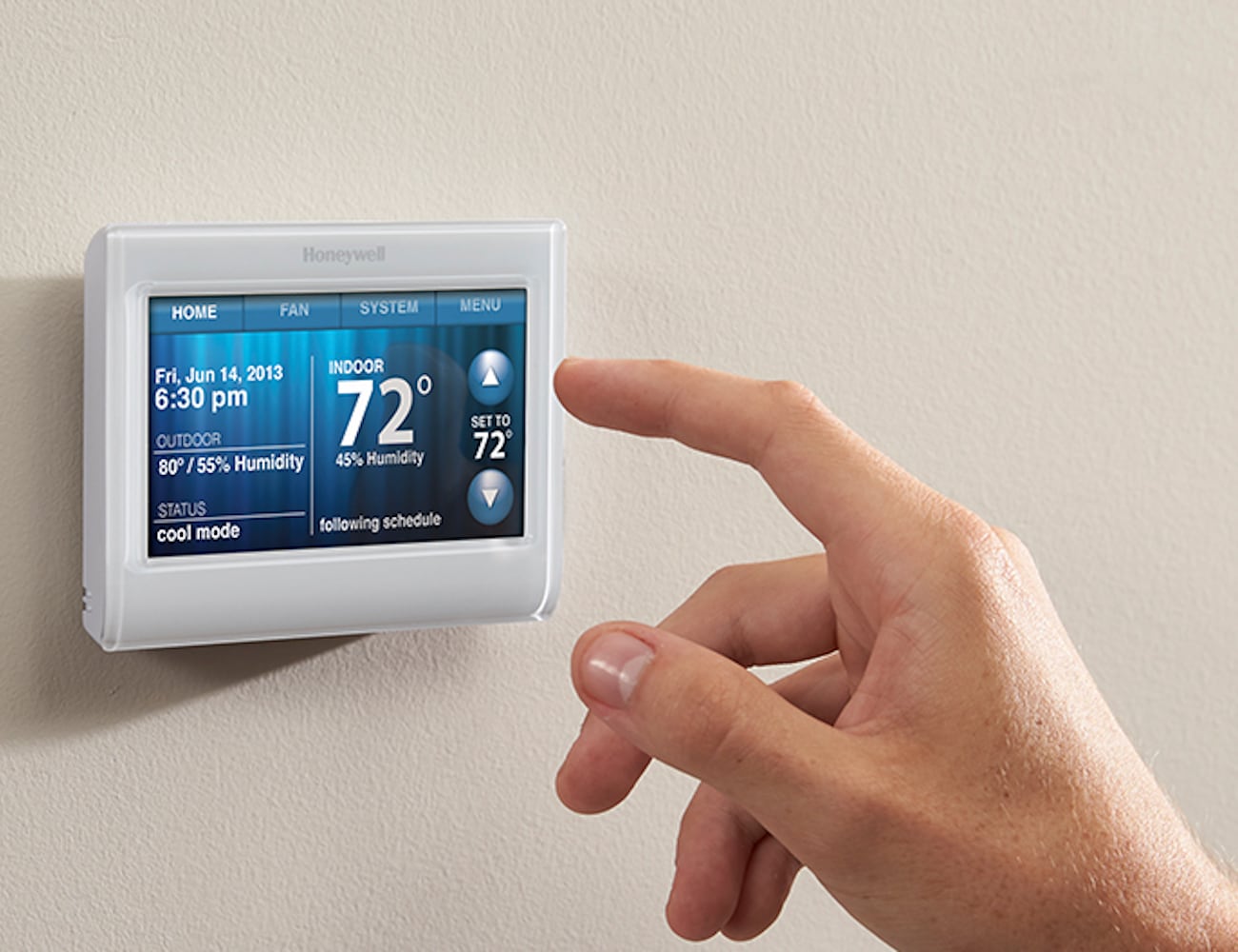Smart Thermostart Presentation
| Introduction to Smart Thermostats | ||
|---|---|---|
| Smart thermostats are devices that allow users to control the temperature of their homes remotely. These devices use advanced technology to optimize energy usage and provide a comfortable living environment. They are designed to be user-friendly, with features like programmable schedules and intuitive interfaces. | ||
| 1 | ||
| Benefits of Smart Thermostats | ||
|---|---|---|
| Energy savings: Smart thermostats can help reduce energy consumption by automatically adjusting temperature settings based on occupancy and weather conditions. Cost savings: By optimizing energy usage, smart thermostats can lead to lower utility bills. Convenience: Users can control the temperature of their homes from anywhere using their smartphones or other connected devices. | ||
| 2 | ||
| Features of Smart Thermostats | ||
|---|---|---|
| Learning capabilities: Some smart thermostats can learn the user's preferences and create personalized schedules to maximize comfort and energy efficiency. Integration with smart home systems: Smart thermostats can be integrated with other smart devices, allowing for seamless automation and control. Energy usage reports: Many smart thermostats provide detailed reports on energy usage, helping users track and analyze their consumption patterns. | ||
| 3 | ||
| Compatibility and Installation | ||
|---|---|---|
| Compatibility: It is important to ensure that the smart thermostat is compatible with your heating and cooling system before purchasing. Installation: Smart thermostats can typically be installed by homeowners themselves, but professional installation services are also available. Setup and configuration: Users need to follow the manufacturer's instructions to set up and configure the smart thermostat properly. | ||
| 4 | ||
| Popular Smart Thermostat Brands | ||
|---|---|---|
| Nest: Nest thermostats are known for their sleek design and advanced learning capabilities. Ecobee: Ecobee thermostats are highly regarded for their integration with smart home systems and remote sensors. Honeywell: Honeywell offers a range of smart thermostats with various features and price points to suit different needs. | ||
| 5 | ||
| Security and Privacy Considerations | ||
|---|---|---|
| Data privacy: Smart thermostats collect data on temperature settings and user behavior, so it is essential to choose a device from a reputable brand that prioritizes data privacy. Security measures: Manufacturers implement security measures, such as encryption and authentication, to protect user data and prevent unauthorized access. User control: Users have the ability to control and manage their data, including opting out of data collection or sharing. | ||
| 6 | ||
| Case Study: Energy Savings with Smart Thermostats | ||
|---|---|---|
| A study conducted by the Department of Energy found that smart thermostats can save homeowners an average of 10-12% on heating and 15% on cooling costs. Another study by the Lawrence Berkeley National Laboratory showed that smart thermostats can save up to 8% on heating and cooling costs in residential buildings. These findings highlight the significant energy-saving potential of smart thermostats. | ||
| 7 | ||
| Tips for Maximizing Smart Thermostat Benefits | ||
|---|---|---|
| Utilize the programming features: Take advantage of the programmable schedules and personalized settings to optimize comfort and energy usage. Utilize occupancy sensors: Many smart thermostats have occupancy sensors that can automatically adjust the temperature based on whether someone is present in the room. Regularly review energy reports: Analyzing energy reports provided by smart thermostats can help identify areas for further energy savings. | ||
| 8 | ||
| Customer Reviews and Satisfaction | ||
|---|---|---|
| Customer reviews indicate high levels of satisfaction with smart thermostats, particularly in terms of energy savings and convenience. Users appreciate the ability to control the temperature remotely, as it allows for a comfortable living environment upon arrival. Many customers also appreciate the sleek design and user-friendly interfaces of smart thermostats. | ||
| 9 | ||
| Conclusion | ||
|---|---|---|
| Smart thermostats offer numerous benefits, including energy and cost savings, convenience, and enhanced comfort. They provide users with greater control over their home's temperature and can be seamlessly integrated with other smart home devices. With the continuous advancements in technology, smart thermostats are becoming an essential component of modern homes. | ||
| 10 | ||
| References (download PPTX file for details) | ||
|---|---|---|
| Department of Energy. (n.d.). Smart Thermosta... Lawrence Berkeley National Laboratory. (2018)... Your third bullet... |  | |
| 11 | ||









